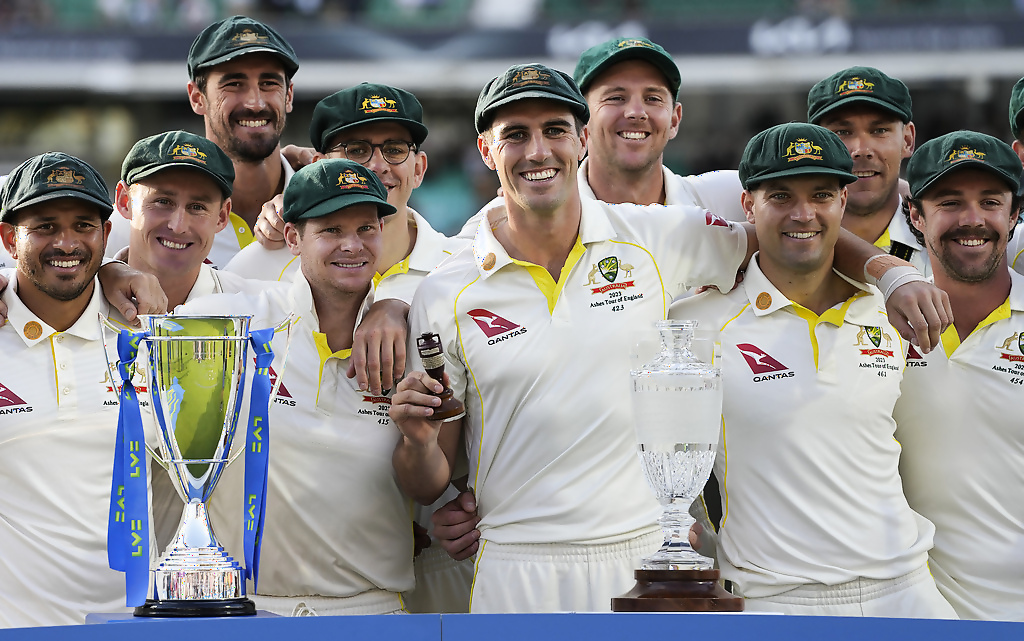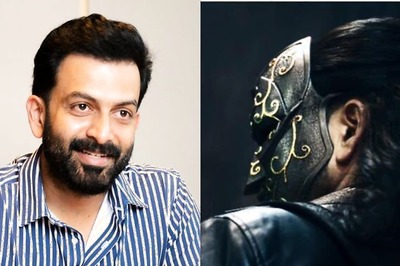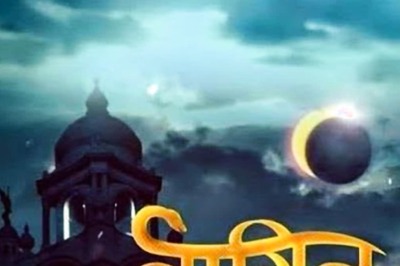
views
There is an uncanny similarity between Ashes cricket and the fictional Harry Potter world. Yes, both were born in Britain and eerily, three of the England team members in this side, have sobriquets from the Potter world, since their physical traits are redolent to central characters in J.K. Rowling’s masterpiece.
There is Stuart Broad, known as Draco Malfoy, and Johnny Bairstow and Ben Stokes, called the Weasley Twins, for that quintessential red hair. And staying on the eerie school of thought, the film stars Daniel Radcliffe who played Harry Potter, and Tom Felton, who played Draco Malfoy are cricket tragics and England cricket fans. But I digress!
All three, Broad, Stokes, and Bairstow, played a magical role in this Ashes series, and unlike Malfoy and the Weasley twins, all three represented the same side, a Gryffindor-esque Three Lions. More on that in a bit.
There is something magical about the Ashes. It’s one of the few tournaments that epitomizes both antiquity and antagonism in a single frame. Unlike other historic rivalries such as the Ryder Cup and Wimbledon, which are steeped in historic folklore, sans the antagonism. Growing up right in between England and Australia, my sagacious cricket connoisseur dad introduced me to the sport through books on W.G. Grace and an old VHS tape of the 1984 ABC series Bodyline, with Hugo Weaving who immortalized this role as Douglas Jardine (long before his Hollywood blockbuster roles of Agent Smith in The Matrix or Elrond in Lord Of The Rings. There was Jim Holt as the British spearhead of Harold Larwood and Gary Sweet as the venerated immortal cricketing apogee in Sir Donald George Bradman. The 1932-33 series Down Under, saw Anglo-Australian relations go down under as well. The infamous series now
codified as the ‘Bodyline’ Test series, has been spoken about close for close to a century.
Stoic and snooty English captain, Douglas Jardine, opted to then use ‘leg theory’ at the Australian batsmen, particularly Bradman with Larwood as the spearhead.
Perhaps one of the first instances of geopolitics and cricket combining, and 90 years later, as one of the Weasley twins, Johnny Bairstow was ‘stumped’ with his wandering run out, as the other Weasley twin, Ben Stokes stared on from the other end. Not quite Bodyline, but it did leave the Anglo-Australian cricket world in furious opposite sides of the aisle as even Australian and British Prime Minister, Anthony Albanese and Rishi Sunak, each weighed in on the controversial runout.
Cricket may have long passed the days of colonial hubris, where the Marylebone Cricket Club (MCC), the erstwhile Imperial Cricket Council, and its Lord’s who called the shots. The heart of the sport now lies ubiquitously in dusty second-tier cities in the subcontinent. The sport may have been the epitome of the empire, one where it’s played in its former colonies as a way to pay homage to the crown and show acquiescence to royalty. Right from the Victorian era, cricketers from Victoria, and other parts of Australia, challenged the empire in its sport, and an erstwhile British penal colony adopted the sport as its own on its first step to nationhood.
Today, in cricket, it’s the colonies that rule the empire, both in success and the sport’s coffers.
The Ashes play second fiddle to fierce rivalries on the cricket field, as that accolade goes undisputedly to India and Pakistan. But the Ashes, something so steeped in deep colonial legacy, and a sense of Anglo-Saxonness, has evolved, to where in Ashes 2023, you had an Australian batsman of Pakistani origin face a British-born bowler of Pakistani origin, both linked together in the piousness of their faith, but separated by geographies, each with their own immigrant story to share.
It’s ironic that in a five-test Ashes series, the first ball of the tournament at times has acted as a harbinger for the series. Steve Harmison’s shocking first delivery in 2007, and Rory Burns losing his leg stump to Mitchell Starc in 2021, set the tone for heavy English losses. So, when Zak Crawley drove Pat Cummins for a four off the first ball in 2023, a special series was in the offing.

A new revolution was underway. Like Leg Theory, which earned the sobriquet of Bodyline, New Zealand-born duo, England coach Brendon McCullum and England captain Ben Stokes’ adopted a hard-hitting approach to test cricket batting, thus earning the moniker of Bazball, McCullum’s nickname.
Bazball went 2-0 down, in an almost series, where precious sessions could have altered the permutation combination of results. Like Headingley 2019, Stokes pulled out the Herculean handbook of miraculous innings at Lord’s, but unlike Headingley 2019, it wasn’t to be, and England was down 2-0. They faced the ominous task of having to win three on the trot to Urn back glory. But like Headingley 2019, they got the win in the third test at Leeds, not Stokes but Woakes and some other folks. Mark Wood is built for the Ashes, not just his fiery pace, but it’s in the name and the science – Wood on Fire, means Ashes, do forgive the wordplay.
A Manchester miracle awaited, as England hadn’t beaten Australia there since Ian Botham’s famous Ashes series of 1981. It was also the venue in 2005, where Australia after having failed to get over the line at Edgbaston in the previous test, held on, 9 wickets down, to seal a draw and then in 2019, secured the Ashes with a win.
Australia was Bazballed, courtesy of Zak Crawley’s near-double ton, and with a likely 2- 2 result to set up a crescendo with a lip-smacking Oval finale, England were defeated, rather deprived, by the most English thing – The English Weather! Cheekily, I would say downfall because of a downpour and the empire down at the behest of the umpires.
The Urn returned to the antipodes, but not without one final hoorah!
Prior to this Ashes series, the milestone club awaited three veteran bowlers. Nathan Lyon close to the 500 th wicket, only the second Australian spinner after the late and great Shane Warne, was precluded from doing so. His Achilles Heel was almost his Achilles Heel, it was his calf instead. Jimmy Anderson, close to 700 wickets, already the only seamer to have hit over 600 wickets prior to the start of the series, was aiming for 700 close to his 41st birthday.
His bowling partner in crime, Stuart Broad, the protagonist of this Ashes, or the antagonist, depending on your loyalties, joined his mate, Anderson in the 600 club. In an Atherton-McGrath bunny hunting contest, he got David Warner out a staggering 17 times in his career, his last one being in this series, as he decided to call time on his career. In an era, of English mediocrity, which Stuart Broad grew up watching, he was an absolute colossus, having delivered England three Ashes at home and one overseas.
Albeit, called Draco Malfoy for his appearance, he was reviled ad-nauseum in Australia and the pantomime villain in the southern hemisphere.
Individual reasons aside, Stuart Broad like Virat Kohli was among the few Australian non-Australian players, who gave it back with nose and toes bouncers and yorkers, seam and swing peaches, and got the edges with the sledges.
A fitting end to Broad’s decade-plus career, becoming only the fifth bowler in world cricket to take over 600 wickets, only the second seamer and second Englishman and 150-career test wickets against Australia, and nearly finished the top wicket-taker of this Ashes series.
Like former Indian wicketkeeper, Parthiv Patel, Broad appears like he hasn’t aged and yet has matured in ways that only qualified seamers can. Broad may not read from Vijay Merchant or Sunil Gavaskar’s book of wisdom but he followed their credo, “retire when people ask why, not why not”?
Malfoy lived in a magical world, Broad found out, he too could conjure up magic at will. In his final test, the final ball that he faced with the willow, he slogged for six. Then with the leather, a wicket with his very last ball, to win an Ashes test and preclude Australia from winning on English soil since 2001.
However, his seam twin, England’s record wicket-taker, Jimmy Anderson, already at 41 had a torrid summer and was perhaps picked more for sentimental reasons, than selection pragmatism, as he was sub-par, with even part-time offie Joe Root having picked up more wickets. Anderson, perhaps, needs to read more from Merchant and Gavaskar’s musings and introspect being a liability over an asset.
Apropos of the Bairstow controversy, perhaps a fitting end to a riveting series that Australia’s antagonist, Stuart Broad, took the final wicket, the one of Australian wicket-keeper Alex Carey, caught behind by Johnny Bairstow.
Cricket karma is real and alive!




















Comments
0 comment